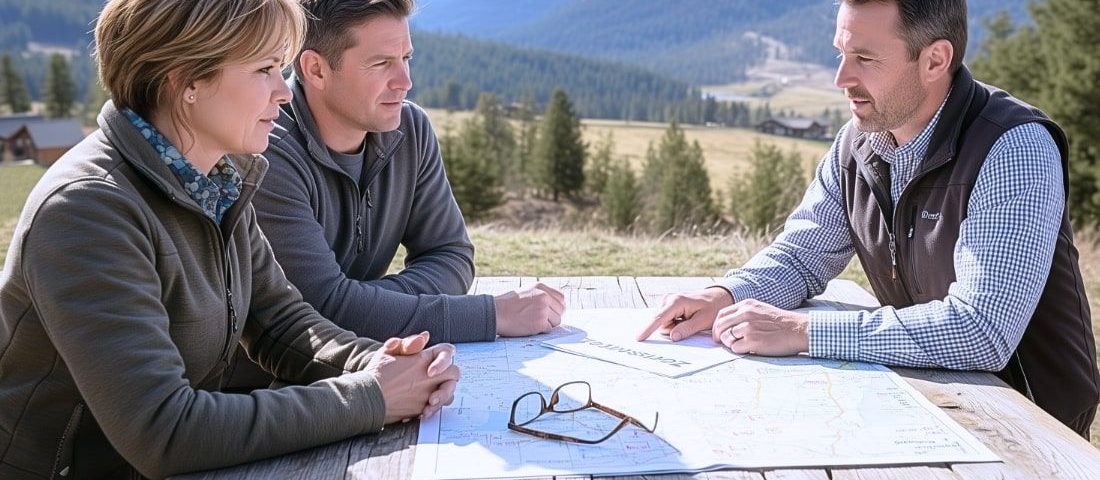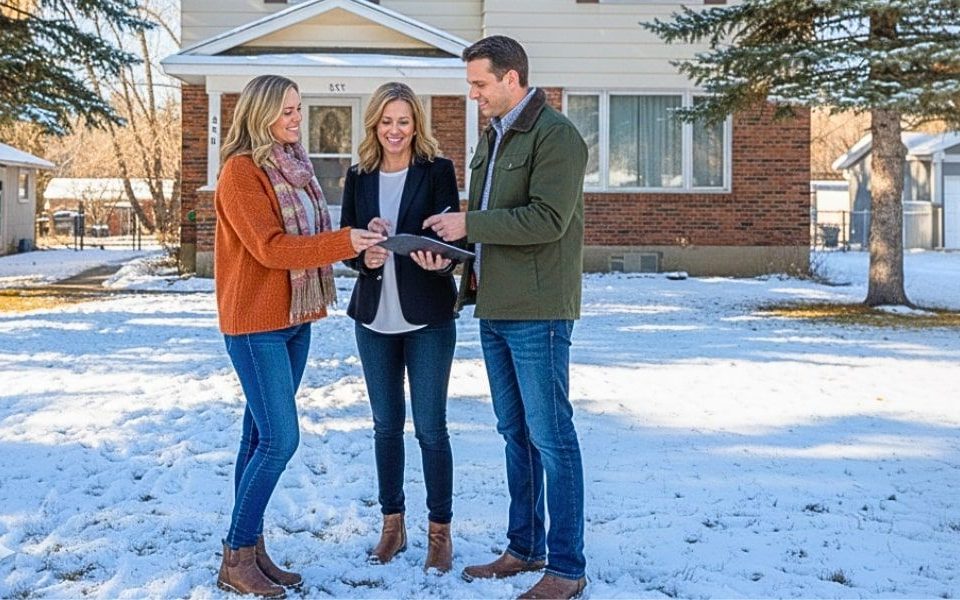
Flathead Valley STR Rules Every Buyer Must Know
September 26, 2025
Whitefish vs. Kalispell vs. Bigfork: Same Valley, Three Different Lives
October 4, 2025If you’re shopping or selling in the Flathead Valley and leaning on a Zestimate, pause. Montana is a non-disclosure state, which means closed-sale prices aren’t made public. Automated value models (AVMs) operate with limited information. In rural markets, with wells, septic systems, and variable conditions, algorithms often miss the details that drive prices. Use AVMs as conversation starters, not decision makers.
Working with buyers and sellers on a weekly basis highlights the frustration associated with online estimates. A single shiny number may seem authoritative, but in the Flathead, it’s often a false compass. Let’s explore why these models fall short and how to price homes correctly in the valley.
Why Zestimates Don’t Work in Montana
Montana’s non-disclosure status means no sales reporting. AVMs lean on list prices, tax assessments, and user inputs. None of those equals actual sales prices.
Our housing stock is highly varied. A south-facing home with good plow access and modern windows may sell for significantly more than those without these amenities. A similar home with shaded drive access and an aging septic system often fetches less. Algorithms struggle to recognize those deltas.
Micro-markets exist within just a few miles of each other. Think Whitefish versus outer Kalispell, or lake-adjacent properties versus actual frontage. Each has its own pricing rhythm.
Then there’s seasonality. Summer velocity, driven by water access and tourism, and in winter, with ski and holiday demand, skew time-on-market and comp relevance. Models rarely weigh this correctly.
The translation? The Zestimate you’re leaning on may be more misleading than helpful.
The Local Way to Price Right
Here’s how we help buyers and sellers ground decisions in reality:
Start with a private comp brief. We pull closed sales and categorize them for traits that matter here. These include sun exposure, slope, well yield, septic type, view corridor, noise, HOA rules, and proximity to year-round amenities. Expect a range, not a pinpoint. Estimates, by their very nature, are imprecise
Adjust like an appraiser. Setting comes first: sun exposure, wind, view, privacy. Access is next: plow route priority, grade, winter reality. Systems follow: well and septic age, energy profile. Finish details come last. You can remodel a kitchen, but you can’t rotate a lot to get more sunlight.
Respect lake logic. Whitefish Lake often behaves like a branded luxury asset where land value dominates. Flathead Lake offers more variety and, in certain coves, a better lifestyle for the dollar. Your comps must match shoreline, orientation, and approach.
Use structure to bridge gaps. When buyer and seller values don’t align, shift from price drama to concessions. Closing cost credits, prepaids, or repair credits keep underwriters happy and preserve headline value.
What this means for you: Pricing well isn’t about chasing perfection. It’s about recognizing the right market variables and structuring around them.
Buyer Playbook: Don’t Overpay or Miss Out
- Ask for the real comp packet. In a non-disclosure state, that’s the truth set.
- Shop the 80% rule. Secure setting and access, then plan to improve finishes later.
- Be offer-ready. Proof of funds or pre-approval, a clear inspection strategy, and concise timelines make you competitive.
- Double-check the AVM. If the Zestimate doesn’t align with local comps, believe the comps.
When the right Flathead property appears, being ready beats relying on a shaky algorithm.
Seller Playbook: Win the First Two Weeks
- Anchor to verified closed data. AVMs that inflate or undercut both cost you.
- Price inside the range. Correctly priced homes find buyers quickly; overpriced homes sit and lose momentum.
- Focus on tune-ups that matter here. Trim trees for light, ensure smooth winter access, document well and septic health, and seal energy leaks.
- Keep the file clean. When needing credits, structure them as closing costs, prepaid items, or repair allowances to simplify the underwriting process.
The first two weeks on the market set your trajectory. Get it right, and buyers will show up.
A Tale of Two Buyers
Not long ago, I worked with two families relocating to the area. One came from Seattle, found a property near Bigfork, and leaned heavily on the Zestimate. Zillow suggested the home was $200,000 underpriced. They rushed in with a high offer and felt shocked when the appraisal didn’t support it. They had to renegotiate, costing them both time and confidence.
The other family took a different path. They wanted lake access and privacy. Instead of relying on the AVM, we reviewed a private comparative market analysis (CMA) packet together. We adjusted for sun exposure, shoreline, and the approach to winter. Their target home came in slightly above the Zestimate, but aligned perfectly with verified comps. They wrote a firm, clean offer with proof of funds and won the home without drama. Months later, they told me they felt grounded in their decision because it reflected local reality, not an algorithm’s guess.
The second family’s experience demonstrates how the proper process fosters confidence, rather than panic and regret.
Flathead Pricing Myths vs. Truths
- Myth: “Zillow says $X, so that’s the market.”
Truth: Zillow doesn’t see the sale price. Closed comps do.
- Myth: “Square footage drives value.”
Truth: Setting and access lead. Square footage only refines.
- Myth: “If I wait, AVMs will trend down and I’ll save.”Truth: The right properties sell quickly in this area. Waiting often means missing out.
Our Point of View
Real data beats algorithms when it’s the correct data. In a non-disclosure, micro-market like the Flathead, your advantage comes from a private comp range. Combine that with a clear list of non-negotiables and a structure-first negotiation plan. Treat Zestimates as noise. Make decisions from the signals locals actually see.
If you’re thinking about a move, ask us for a Flathead Reality Pricing Brief. We’ll hand-pick comps matched to your home or target. We’ll explain adjustments in plain English and provide an offer or listing language you can use this week.
FAQs on Flathead Valley Pricing
Why does Montana keep sale prices private?
Montana’s non-disclosure laws prevent public recording of closed sale prices. Only Realtors® and appraisers can share verified sold data with clients.
How do Realtors® get accurate pricing if sales aren’t public?
We have access to the Multiple Listing Service (MLS), where agents log sold data. That’s how we create comp briefs that reflect real market values, not estimates.
Can AVMs still be helpful for buyers?
Yes, but only as a rough guide. AVMs flag properties for review, but decisions should rely on closed comps and local context.
Why do some homes seem way overpriced online?
AVMs can inflate expectations, or sellers may set aspirational prices. Verified comps provide the real picture.
Do appraisers face the same challenges?
Yes, but they use MLS data and lender standards. We can help interpret the range earlier in the process.
How do I know if I’m overpaying?
Cross-check your offer with a private comp packet. If comps support it, you can feel confident, even if a Zestimate suggests otherwise.
What’s the biggest pricing mistake sellers make?
Overpricing in the first two weeks. The market reacts quickly, and homes that linger tend to draw lower offers later.
Are lakefront properties really that different in price?
Yes. Shoreline orientation, access, and sun exposure have a significant impact on value. Treating all lakefront the same leads to mispricing.
Price with Confidence in the Flathead
Navigating Montana’s non-disclosure market is tricky, but P3 & Associates makes it simple. Request a Flathead Reality Pricing Brief today. We hand-pick verified comps, explain key adjustments in plain English, and provide actionable offer or listing guidance. Make decisions grounded in local reality, not algorithms.
Contact P3 & Associates now and make your next Flathead move with confidence.





